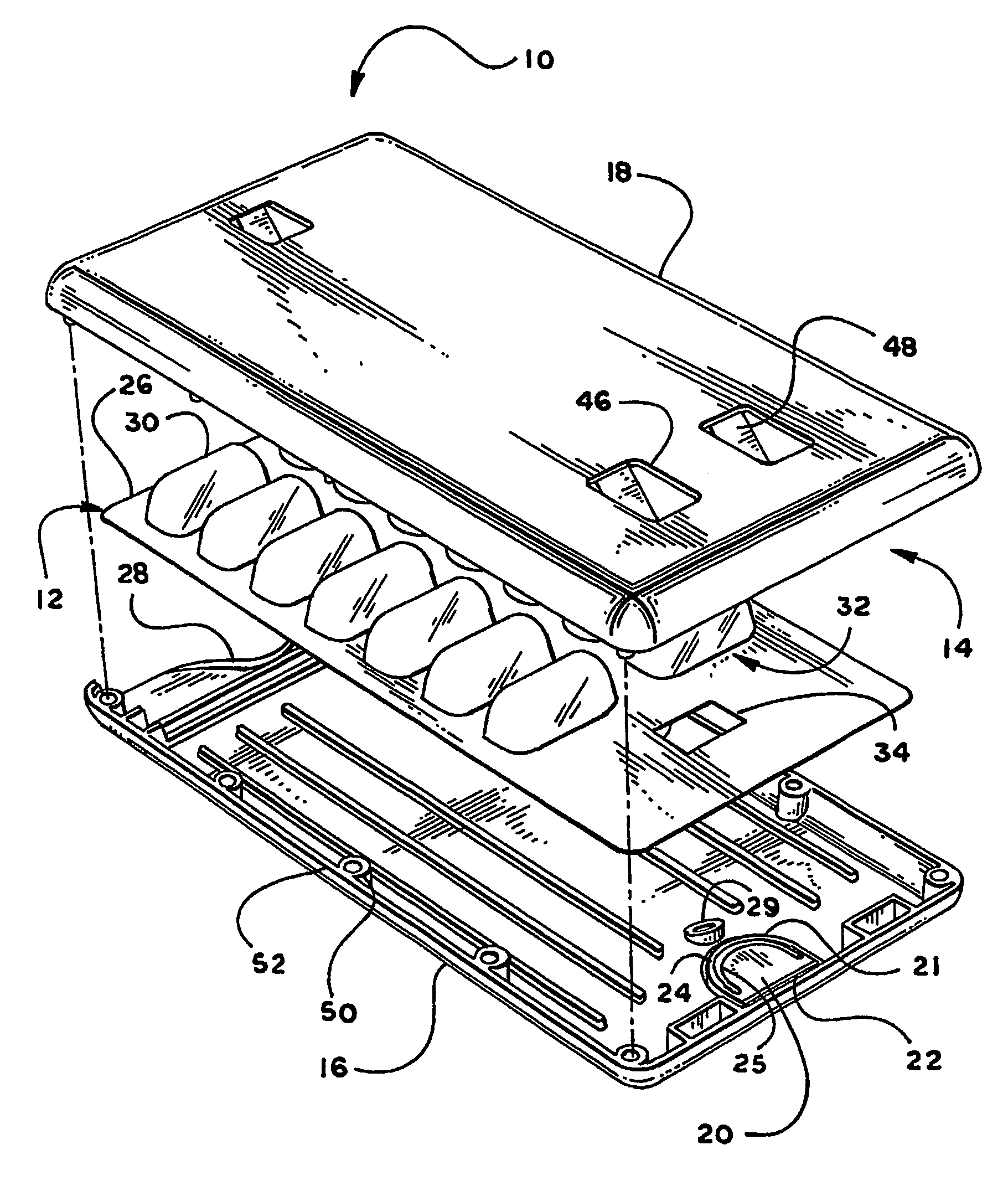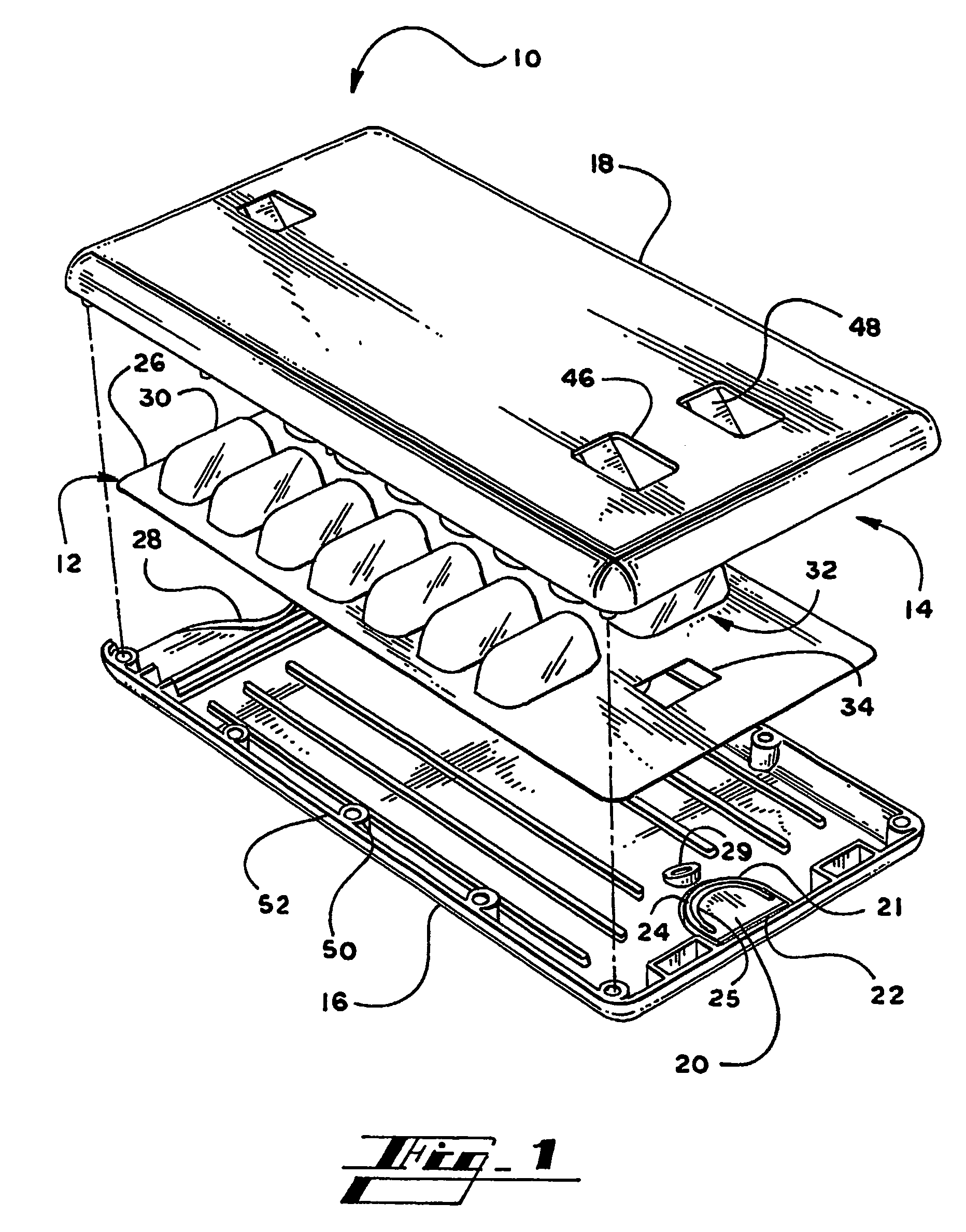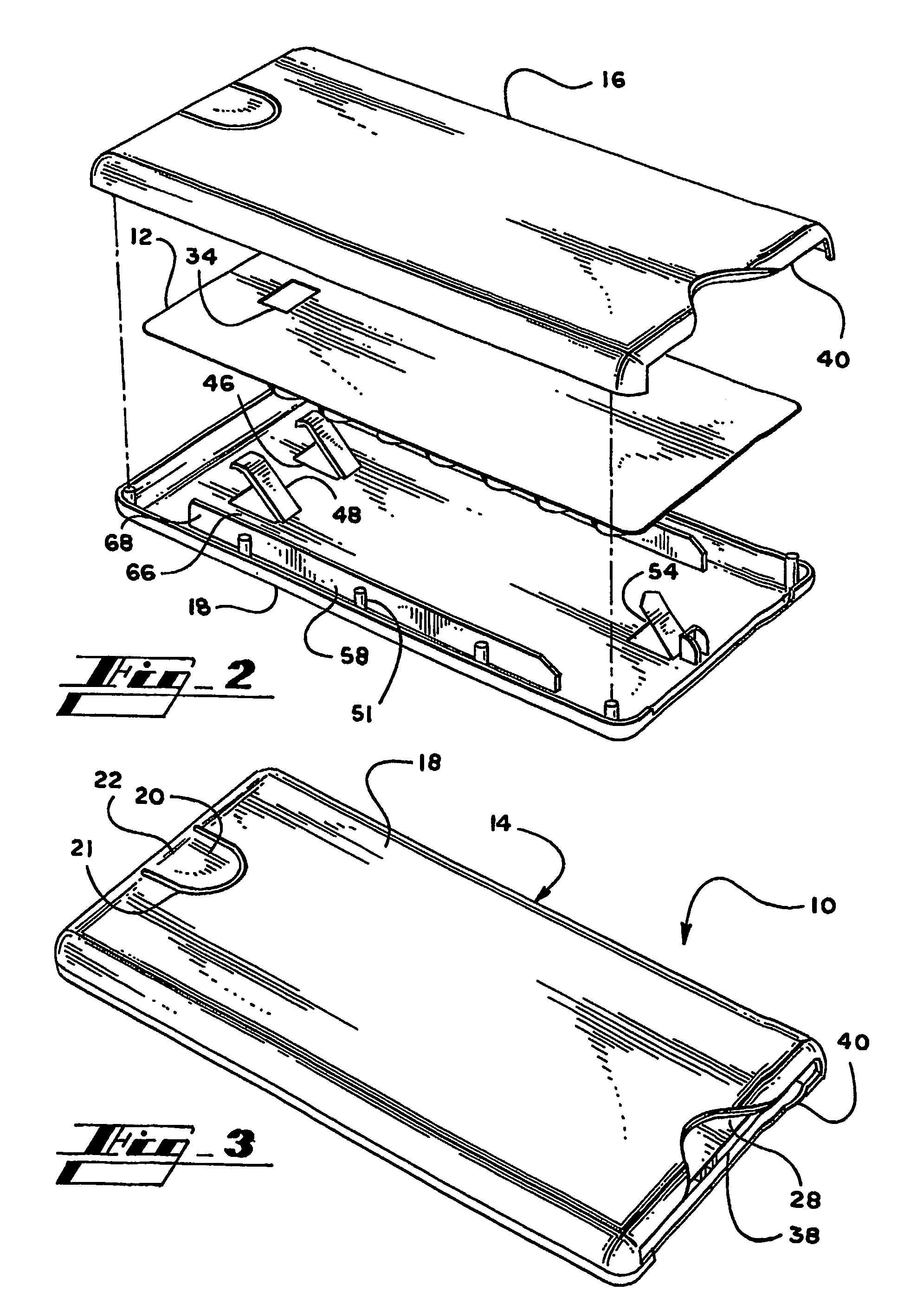Unit dose locking container
a technology of locking container and dose, applied in the field of child-resistant locking container, can solve the problems of difficulty in ensuring the safety of children with access to a quantity of self-evidence of the dangers posed by children with access to tablets not intended for their consumption, etc., to achieve the effect of reducing assembly cost, facilitating access, and minimal structural rigidity
- Summary
- Abstract
- Description
- Claims
- Application Information
AI Technical Summary
Benefits of technology
Problems solved by technology
Method used
Image
Examples
Embodiment Construction
[0025]As required, detailed embodiments of the present invention are disclosed herein. It will be understood that the disclosed embodiments are merely exemplary of the invention that may be embodied in various and alternative forms. The figures are not necessarily to scale, and some features may be exaggerated or minimized to show details of particular components. In other instances, well-known materials or methods have not been described in detail in order to avoid obscuring the present invention. Therefore, specific structural and functional details disclosed herein are not to be interpreted as limited, but as a basis for the claims and for teaching one skilled in the art to variously employ the present invention.
[0026]Referring now to the drawings, wherein like numerals represent like features throughout, there are illustrated embodiments of the present invention. Turning first to FIGS. 1-3, there are shown top and bottom exploded views and a bottom view of the locking package. A...
PUM
| Property | Measurement | Unit |
|---|---|---|
| compressive force | aaaaa | aaaaa |
| axial pressure | aaaaa | aaaaa |
| time | aaaaa | aaaaa |
Abstract
Description
Claims
Application Information
 Login to View More
Login to View More - R&D
- Intellectual Property
- Life Sciences
- Materials
- Tech Scout
- Unparalleled Data Quality
- Higher Quality Content
- 60% Fewer Hallucinations
Browse by: Latest US Patents, China's latest patents, Technical Efficacy Thesaurus, Application Domain, Technology Topic, Popular Technical Reports.
© 2025 PatSnap. All rights reserved.Legal|Privacy policy|Modern Slavery Act Transparency Statement|Sitemap|About US| Contact US: help@patsnap.com



